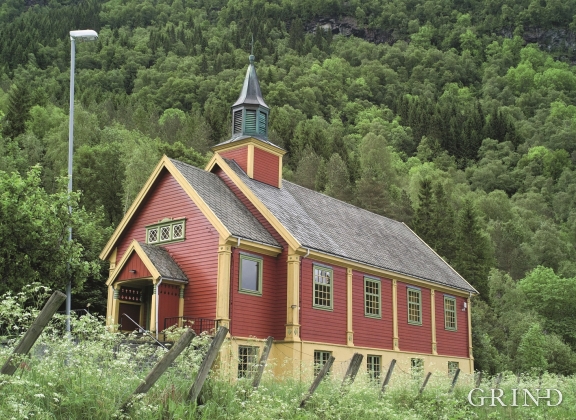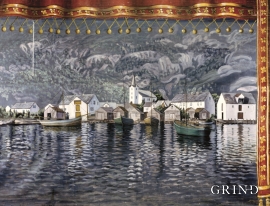Published: 03.11.2015 | Author: Nils Georg Brekke, Kari Losnedahl
As in many of the settlements in Hardanger, it took some time before the youth association in Jondal acquired its own house. Only in 1933 was it ready, erected as a communal effort by the association members. The house is situated with open views on the slope above Jondalsøyri. The building is designed by architect Torgeir Alvsaker, one of the key architects of national classicism in the inter-war period. Many youth associations used Alvsaker’s buildings as a blueprint.
A typical feature for these buildings is the monumental style, both externally and internally. The fixed stage was an obligatory part. Plays with a national content were an important part of the youth movement’s agenda. For the stage in Jondal the movement provided a painted stage curtain with motifs from the fjord settlement of Jondal. The artist was Johan Tenol Tuxen, originally from Vik in Sogn. He was a sought-after painter of stage-curtains and side scenes for youth associations in the entire west of Norway, known for his many renditions of west Norwegian nature. In the Jondal curtain, he has based his work on an old photograph from 1907. Fruit flowering and fertility – part of the repertoire of the youth movement – are missing in this curtain. Instead the emphasis is on the sea, the basis for Jondal’s days of glory.




